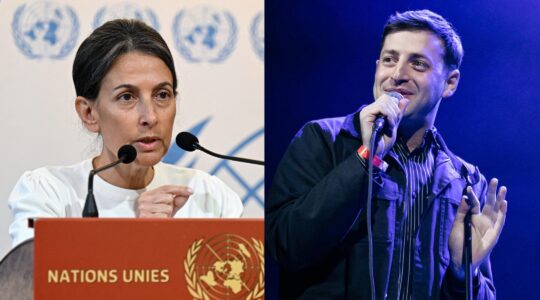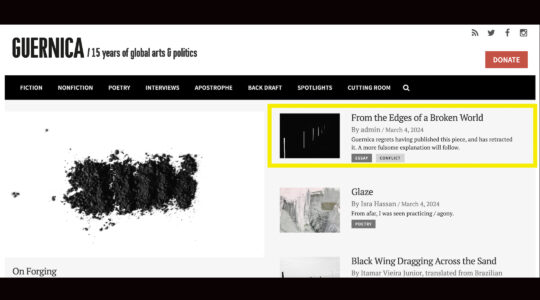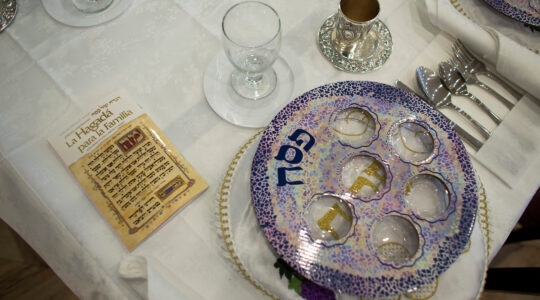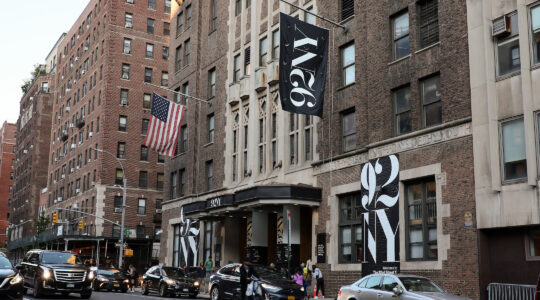For many Ashkenazi Jews, Russia and Ukraine are part of a nebulous entity known as “the Old Country.” A large proportion of us, myself included, have relatives who made the trek overseas to America, often leaving behind a bloody, troubled past. In recent weeks, as Russia and Ukraine have been in the media spotlight, symbols of that haunting legacy have reemerged, bearing new meanings but retaining their old resonances for Jews.
Cossacks: In a now-infamous recent incident in Sochi, members of the punk-rock protest collective Pussy Riot were horsewhipped by a man in uniform identified as a Cossack.
For Jews, the word “Cossack” means only one thing: fear. From the Cossack uprisings with their many real-life Jewish victims, to the fearsome Cossacks in “Fiddler on the Roof,” Cossacks have long imparted an air of menace in Jewish culture.
The Cossacks with whom Jews are most familiar were militaristic groupings that arose, in scattered fashion, across the steppes of Ukraine by the 1400s. When today’s Ukraine was ruled in large part by Poland, Jews often found themselves trapped in the middle of conflicts between Polish noblemen and their Ukrainian vassals, Cossacks among them. In Ukraine, Cossack uprisings were often marked by anti-Jewish violence.
Later on, when the Russian Empire ruled the area now known as Ukraine, Cossacks served as mercenaries in imperial wars. And in the turmoil that marked the turn of the 20th century in Russia, roving Cossack bands often engaged in pogroms, particularly during the Russian Revolution and its immediate aftermath.
But the term Cossack has other meanings, too.
Cossack is a recognized ethnicity in Russia, with substantial communities in the Don and Kuban regions and in the Urals. The ethnic Cossacks are known for their martial culture. The man who whipped the Pussy Riot members was a member of a Cossack auxiliary police force that was patrolling the Olympic city.
Meanwhile in Ukraine, protesters dressed in traditional Cossack garb have been a frequent sight in the conflicts; Cossack forelocks, dress and music have formed an important, and consistent, motif for supporters of the Ukrainian opposition movement.
Cossack identity is a powerful national symbol in Ukraine. Some Ukrainians may trace their lineage directly back to ethnic Cossacks, but for the most part, contemporary assumption of Cossack identity has more to do with national pride: the stated goal of the Registered Cossacks of Ukraine, an organization created in 2002, is to “promote the development of Ukraine as a sovereign, independent, democratic and legal state.”
It’s linked with centuries of Ukrainian history and has spawned its own rich tradition of poetry, songs and folk attire. The Ukrainian national poet, Taras Shevchenko, elevated the Cossack to a Romantic symbol of national pride in his epic poems and sagas. In the context of a struggle that many Ukrainians see as a fight for the independence of Ukraine, incorporating symbols of Ukrainian identity has a lot more to do with connecting to a heroic national past than it does with the elements that scare Jews.
Hundreds: Some eyebrows may have also been raised at the news that Ukrainian protesters were organizing themselves into “Hundreds,” or sotni, to combat government forces. The groups derived their name from a traditional type of Cossack cavalry squadron — these squadrons fought in the Russian army for years, including in World War I.
But for Jews, talk of “Hundreds” organizing in Ukraine might hearken ominously back to the “Black Hundreds,” the collective name of a movement of ultra-nationalist Russians at the turn of the 20th century. In another time of turmoil around the Russian Revolution of 1905, the Black Hundredists spread vicious propaganda and incited pogroms in the Russian Empire.
Ironically, though, the Black Hundredists came out strongly against the existence of an independent Ukrainian nation, supporting the doctrine that Ukrainians were merely Russians attempting to call themselves by another name — hardly the stuff of today’s Ukrainian populist revolution.
Bohdan Khmelnitsky: With so much attention focused on Kiev in past weeks, the striking architecture of that city has come to dominate news images, with gold-domed cathedrals turned to makeshift hospitals and ancient streets stripped of their cobblestones. One of the more striking aspects of central Kiev is a huge, imposing statue of Bohdan Khmelnitski, a Cossack chieftain who led an uprising against Polish nobles in 1648, in Kiev’s central Sofievsky Square.
The Khmelnitsky statue is emblematic of the wildly divergent meanings that symbols can take on in the Ukrainian, Russian and Jewish national imaginations. For Jews, Khmelnitsky’s name still carries notes of horror more than 300 years after his death, as the uprising of 1648 led to the murder of thousands of Jews in the ensuing violence. Khmelnitsky represents a low point in a cycle of violence, scapegoating and denigration that defines Eastern European Jewish history for many Jews. For Ukrainians, however, Khmelnitsky is something of a national hero, appearing prominently on banknotes and in poetry — in large part because of his establishment of an independent Cossack entity, the Hetmanate, and perceived liberation of Ukraine from Poland.
But the monument itself was built in 1888 — when Kiev was firmly under Russian rule. What gives? Czarist authorities focused on the fact that toward the end of his career, Khmelnitsky bolstered his rule by forming an alliance with Czarist Russia — which later set the stage for all of Ukraine coming under the rule of the Russian Empire.
The curious, or perhaps nerdily devoted, student of Russian history might ask why the Soviet authorities, who ruled Kiev from 1921 to 1989, didn’t take down a statue that had decidedly imperialist resonance. The reason? They decided Khmelnitsky and his ragged band were symbols of class struggle.
Reading the news with a careful eye lately can tell us a lot about the tangled nature of symbols, historical figures, and national identity in this region of the world.
‘Pogromists’: Of course, some evocations of this tangled history are intentional: Russian officials have been doing their best to portray Ukrainian protesters as anti-Semitic “neo-fascists.” Sergei Lavrov, Russia’s foreign minister, even called members of the protest movement “pogromists” — for Jews, perhaps the most ominous word of all.





